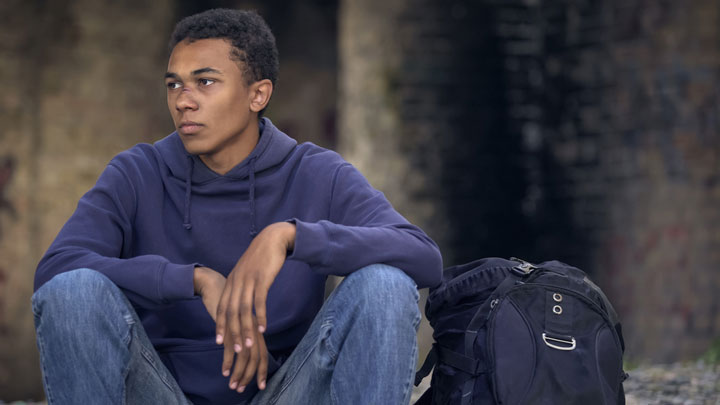Social isolation is not a diagnosis in the Diagnostic and Statistical Manual of Mental Disorders-5 (DSM-5).1 How is social isolation defined? Social isolation occurs when there is a lack of social contacts or an individual who has just a few or infrequent social contacts.2,3
In the case of social isolation related to COVID-19 pandemic, the definition for social isolation is evolving and my current thinking is that COVID-19 social isolation may be defined as a “lack of child to child or adolescent to adolescent interactions in classroom as well as in school/sport/extracurricular activities/and age-appropriate play activities” (Hallas, author). At this time, this lack of social interactions among children or adolescents and their peers within their school and home environments may have caused undue stress, anxiety or fears during their COVID-19 social isolation and as parents prepare to send their children/adolescents to return to school.
A year away from school
At the beginning of the COVID-19 pandemic in the U.S., elementary, middle and high schools throughout the United States (U.S.) were closed and the new world of virtual at-home instruction began. Over the past year, virtual at-home instruction has resulted in children, adolescents, their teachers, and their parents experiencing the effects COVID-19 social isolation. Some states, due to high viral spread within the community, could only continue to offer virtual classes. Even when hybrid classes were offered in which children/adolescents could attend some class days in-person and other days online, many parents opted to keep their children at home. Some states offered in-person classes for elementary and early middle school children with COVID-19 restrictions in place, but did not offer in-person classes for high school students. Thus, children and adolescents throughout the U.S. have all had the potential to experience COVID-19 social isolation.
Signs of COVID-19 social isolation
What are or will be the presenting signs and symptoms of COVID-19 social isolation as children/adolescent prepare to return to school? Prior to the COVID-19 pandemic, a small number of children and adolescents were diagnosed with one of the social anxiety disorders called school phobia. School phobia is a DSM-5 diagnosis that primarily affects adolescents but may be seen in children as young as 8-years old.1 School phobia provokes feelings of anxiety or fear expressed by young children through crying, tantrums or clinging behaviors and older children by school refusal or other acting out behaviors. As the Center for Disease Control and Prevention (CDC)4 newly posted recommendations for return to school are implemented, will COVID-19 social isolation cause an increase in anxiety, fears, and symptoms similar to school phobia or will a new set of symptoms emerge?
Parents need to be role models
For children to safely return to school, teachers and parents must role model positive behaviors for their children and adolescents to enable them to feel comfortable returning to school. While all teachers have been placed in categories that permit them to receive the COVID-19 vaccine, news reports reveal a resistance to receiving the vaccine by some teachers. While parents know the value of in-person learning, if they hear the teachers concerns and refusals to return to school, will this increase parental anxiety for returning their children to in-person education? What can healthcare providers do to change this potential trajectory of hesitancy, anxiety and fears for children, adolescents, parents, and teachers? First, remind parents that children and adolescents are resilient. Offer suggestions to parents and teachers on ways to capitalize on resiliency. All healthcare providers can provide links to the CDC recommendations, references based on the best available science on return to school,5,6,7 to listen to all expressed concerns using motivational interviewing skills to guide individuals or groups to determine the best solutions for their concerns. Successful and safe return to school may be just what is needed for children and adolescents to develop coping skills to deal with or avert adverse outcomes of COVID-19 social isolation.
References
1 American Psychiatric Association. Diagnostic and statistical manual of mental disorders, (DSM-5) (5th ed.). (2013). Washington D.C.: American Psychiatric Association.
2 Hotl-Lunstad, J. Social isolation and health. Health policy brief Culture of health. Accessed 2-16-2019. Retrieved from https://www.healthaffairs.org/do/10.1377/hpb20200622.253235/full/
3 Alarcon, R.D. Mental health in a pandemic state: The route form social isolation to loneliness. Psychiatric Times. Accessed 2-15-2021. Retrieved from https://www.psychiatrictimes.com/view/mental-health-pandemic-state-route-social-isolation-loneliness
4 Center for Disease Control and Prevention. Schools and child care programs: Plan, prepare and respond. February 16, 2021. Accessed 2-16-2021. Retrieved from https://www.cdc.gov/coronavirus/2019-ncov/community/schools-childcare/index.html
5 Hallas, D., Spratling, R., Cupelli, E.T. Safe return to school: A call to action. Contemporary PEDS Journal, 36,8. August 5, 2020. Accessed 2-1-2021. Retrieved from https://www.contemporarypediatrics.com/view/safe-return-to-school-a-call-to-action
6 Koslap-Petraco, M. Taub, A., Hallas, D. Safe return to school: Part 2. Contemporary PEDS Journal, 37, 8. Accessed 2-15-2021. Retrieved from https://www.contemporarypediatrics.com/view/safe-return-to-school-part-2
7 American Academy of Pediatrics. Pediatricians, educators and superintendents urge a safe return to school this fall. 7/7/2020. Accessed 2-16-2021. Retrieved from https://services.aap.org/en/news-room/news-releases/aap/2020/pediatricians-educators-and-superintendents-urge-a-safe-return-to-school-this-fall/
Donna Hallas PhD, PPCNP-BC, CPNP, PMHS, FAANP, FAAN is a certified as a pediatric nurse practitioner and pediatric primary care mental health specialist. She is a Clinical Professor and Director of the PNP program at New York University Rory Meyers College of Nursing. She has presented nationally and internationally on numerous research and clinical topics with the overall goal of improving health care outcomes for infants, children, adolescents and young adults.

